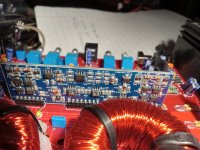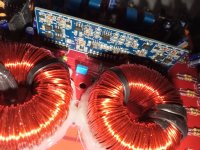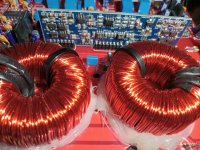Hi Everyone,
I've finally come to terms with the fact that the speakers I want to buy are out of my price range and am now seriously looking into building my own. I'm hoping that the wide knowledge base on this forum can help point me in the right direction to get started. I will acknowledge that what I'm looking for might not exist in a perfect form, so I'm also open to hearing about good compromises.
First: My situation is a bit tricky. I have a long, narrow room that acts as a living room, dining room, and kitchen. Hooray for condo living! It's approximately 12' wide by 40' long. The speakers can't come very far out into the room, as they would invade the living room area. Ideally, the front baffle would be less than 20" out from the baseboard of the front wall. If I have to pull the speakers out every time I want to listen to them (not preferred), 50" would be the absolute most. As a bonus aid/hinderance, there's an extra 5" of depth above 25" off of the ground, but it's a window (usually covered by blinds). That also rules out on-wall speakers.
I've attached a photo taken from the kitchen. Just on the other side of the pile of records on the dining table is the "listening chair". The listening chair is 11' back from the front wall and the kitchen is another 15' feet back from there. You can see how little wiggle room I have in terms of placement.
The function of these speakers would be for "serious" listening in the chair and for playing fun music while cooking in the kitchen. Things I care about: a dynamic, lively, and exciting sound that can also be full and lush when called for. Things I don't care as much about: an expansive soundstage with pinpoint imaging and the deepest deep bass extension. If I don't feel the emotion of Leonard Cohen or Nick Drake, or the euphoric highs of GY!BE or Pharoah Sanders, or if I'm not dancing along to The Kinks or Stereolab in the kitchen, then these will have been a miss.
These will be playing 80% vinyl, 20% CD rips and Tidal streaming through Roon. I currently have a Peachtree Nova 150 class D integrated amp. Bonus points for speakers that are efficient enough to be driven by the Nelson Pass designs here, but I imagine that might throw recommendations off at this stage.
I'm willing to spend about $2K, but notice that lots of popular kits are a lot cheaper than that. If you think an expensive build would be lost on me in my room, that would be good to know! Common (and good) wisdom would probably say to start with a cheaper build to figure things out and then build the more expensive ones, but my wife already thinks we're drowning in speakers, so I'm looking for a pair that will last us a while. I'll measure ten times, cut once. A kit with pre-cut cabinet panels would be very nice, as I don't have immediate access to the space and tools required to make my own.
I'd love some recommendations on specific kits, but general things to look out for that would suit my needs are also welcome. Do you think a sealed box, front-ported, or transmission line cabinet would work best? Full-range single drivers are interesting, but would I be better served by a 2- or 3-way speaker? Stand-mount or floorstanding? Or something way-out there? That could be interesting too, if it works.
I look forward to hearing what you all think and am excited for this project!








